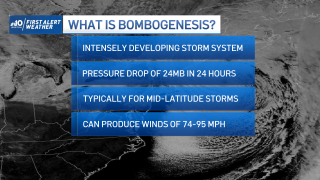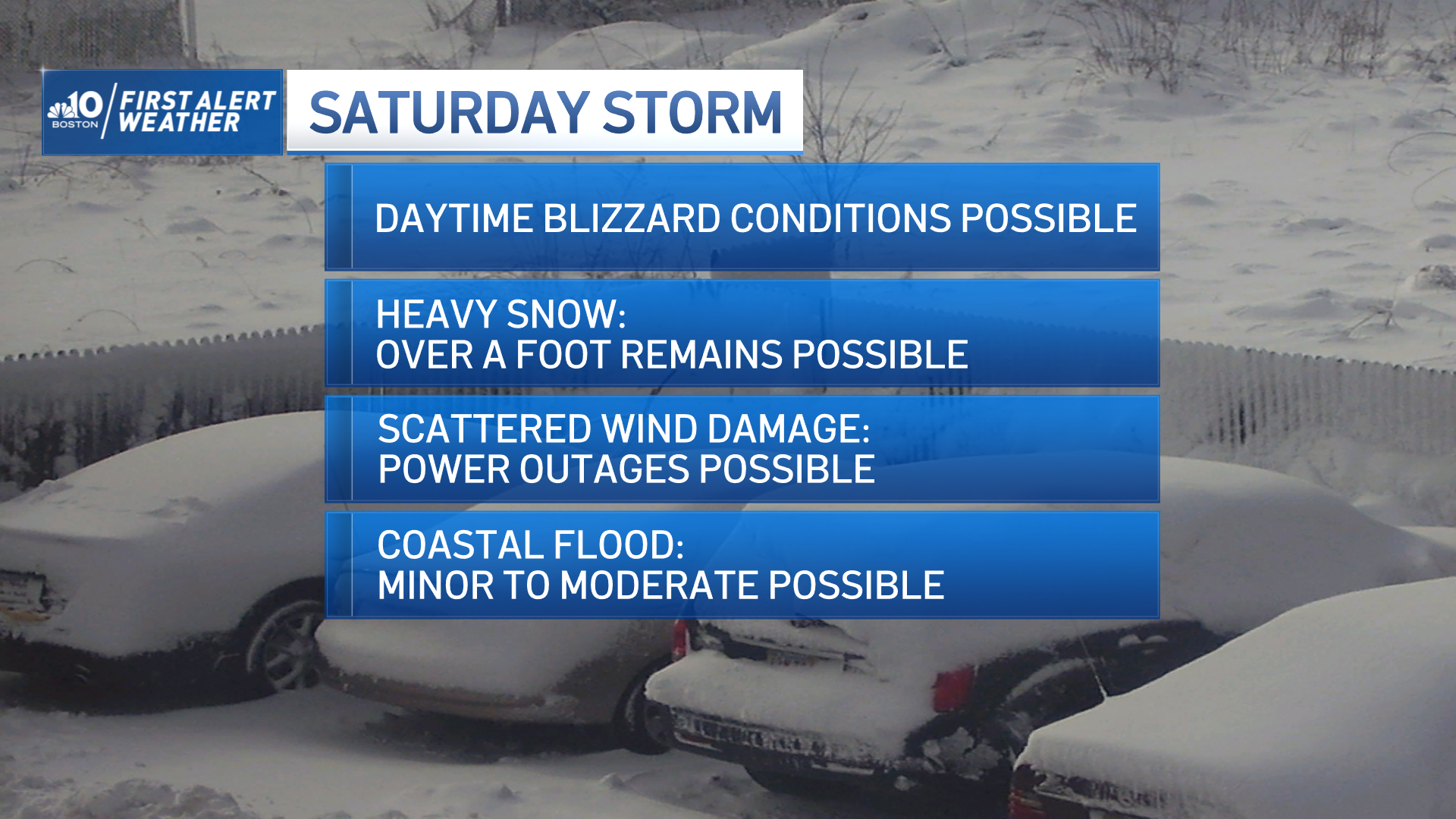
While we narrow the track of the nor’easter in the coming days, a lot of the buzz revolving around the storm might focus on the term “bombogenesis.”
While it may sound like the name of a clandestine military project, it has a real scientific background. In addition, certain criteria must be met before a storm qualifies as a “bomb cyclone.”
First off, the term itself. Back in the 1940s and 1950s, meteorologists were trying to find a term to describe the rapid intensification of storm systems (also called cyclones or low pressure systems) that were seen across the open ocean waters. These explosively developing storms were unlike any they had seen over land.
And that’s for good reason. The ocean-going storms derived much of their energy from the temperature difference between the ocean water and the air. Typically, cold air over (relatively) warmer water creates a volatile mix that can intensify storms very quickly. This “bombing” of storms, whereby the atmospheric pressure drops very suddenly in the course of hours, was first coined by MIT professor Fred Sanders. Over time the name evolved into “bomb cyclone,” then “bombogenesis.”
To earn the name, storms north of 60 degrees latitude must have a drop in pressure of 24 millibars (a unit of atmospheric pressure) in 24 hours. At 25 degrees latitude, the pressure need only drop 12 millibars in 24 hours. To avoid confusion, the term is predominately used for mid-latitude cyclones, not tropical cyclones.



